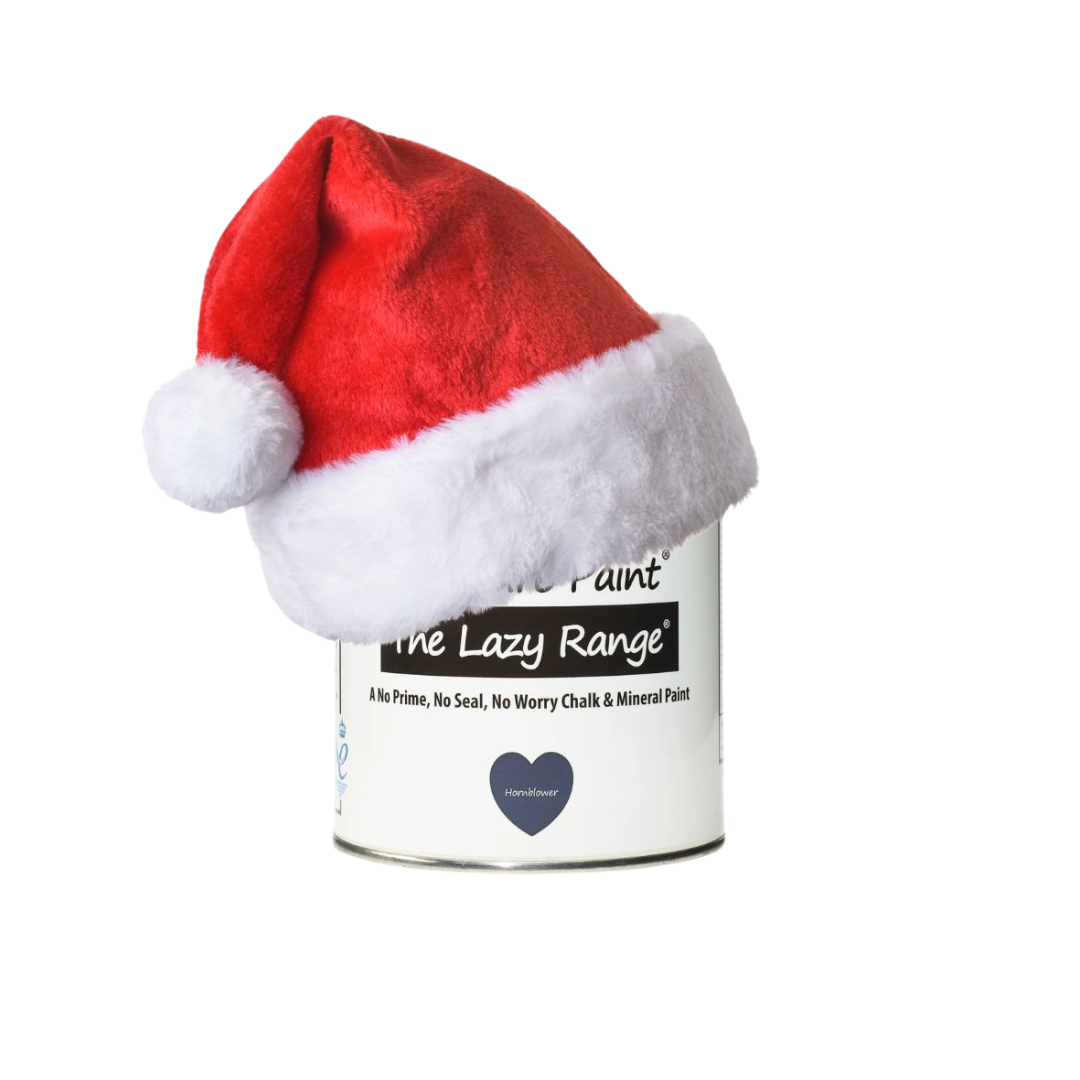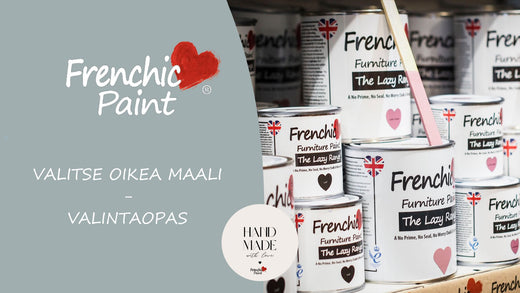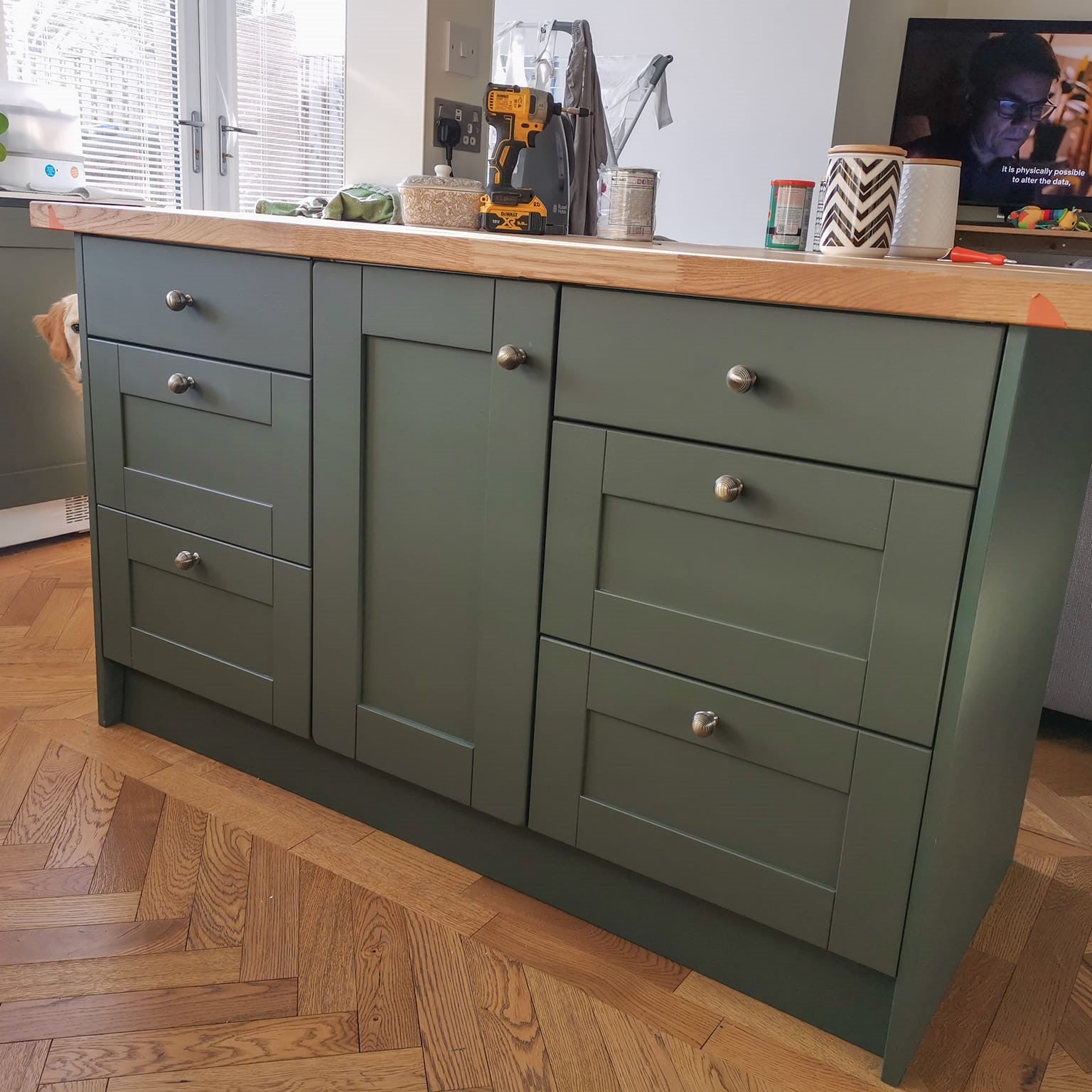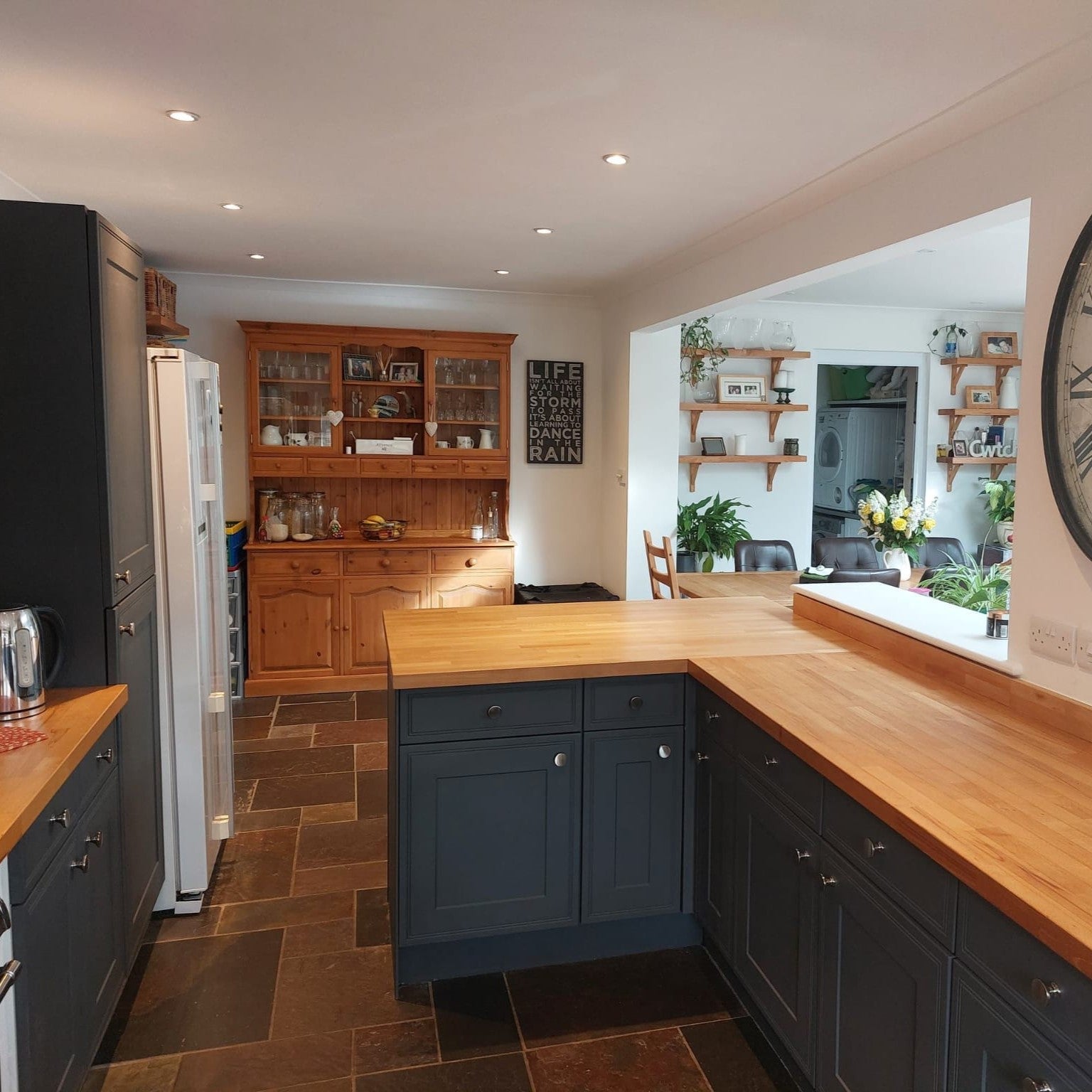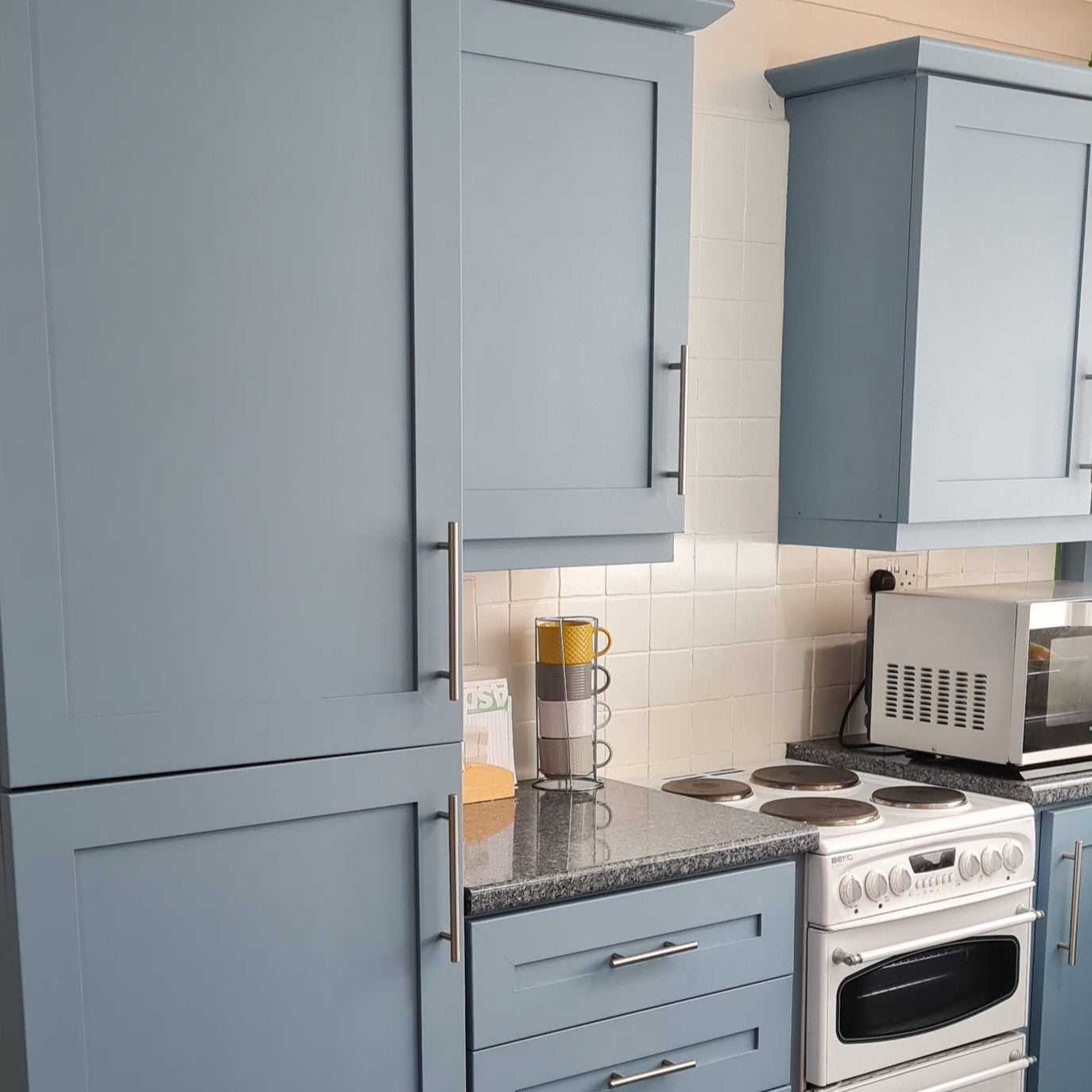Sommar - Det är över! Kan du prata lite om vädret?
Målningssäsongen för utomhusbruk är nu över, så det är dags att ta in färger, material och målningsprojekt och påminna våra kunder om korrekt färgförvaring.
Nu är det ett bra tillfälle att ta fram färgen från stugan, bodarna och garaget i det varma vädret.
Frusen eller matt vattenbaserad färg kan inte återupplivas och målning med den påverkar ytans hållbarhet och jämnhet negativt.

Kom också ihåg att färg inte bör lämnas i en kall bil över natten, eller i baksätet en frostig dag under en shoppingtur. Vattenbaserad Frenchic-färg är känslig för frysning och frost.
Dessa instruktioner och tips är också värda att läsa tidigt på våren när målningsprojekt väntar på att starta efter en lång vinter.

Att måla utomhus när vädret är svalt och fuktigt är inte alltid en bra idé
Även om det fortfarande är soligt på dagen är det kallt på natten och tung dagg stiger upp på nymålade ytor.
För att färgen ska härda (torka) effektivt måste temperaturen vara minst 10 °C (inklusive över natten) i minst 48 timmar efter målning.
Daggiga och regniga förhållanden är inte heller ett bra alternativ.
Instruktioner i korthet
- Kolla vädret och se även väderprognosen för de kommande dagarna. Undvik extrema temperaturer och luftfuktighet.
- Förhållandena påverkar : Färgytan måste vara torr och färgen måste få tillräckligt med tid att torka och härda.
- Undvik problem : Väder som är för varmt, kallt eller fuktigt kan förstöra slutresultatet och minska färgens hållbarhet.
- Glöm inte förvaringen : Stäng färgburken noggrant och förvara den borta från extrema temperaturer. Den bästa förvaringsplatsen är en konstant temperatur på +10-+20.

Målningsväder och förhållanden – När är rätt tid att måla?
Vanliga frågor:
Det är generellt bäst att måla utomhus när vädret är varmt – det rekommenderas inte att måla i kalla eller fuktiga förhållanden. Men för varmt väder kan också orsaka problem! Här är de viktigaste sakerna i sammanfattning:
- Kontrollera vädret under målningstiden och för de kommande 48 timmarna.
- Undvik att måla i extrema temperaturer, direkt solljus, kalla eller fuktiga förhållanden. I en öppen färgburk bildas lätt ett tjockt lager färg på ytan, och färgrester på burkens kanter torkar och faller ner i burken.
- Så ha locket på färgburken för att förhindra att orenheter kommer in i färgen och förvara färgburken i skuggan.
- Kom ihåg att beroende på säsong och plats är utvändig målning inte alltid den bästa idén.
- Se till att ytan är torr
- Den första och viktigaste regeln: målningsytan måste vara helt torr innan färgen appliceras.
- Utemöbler i trä och andra porösa material kan absorbera fukt och kräva lång torktid efter regn, vinter eller tvätt – ibland till och med flera dagar om vädret inte är gynnsamt. Detta problem förstärks tidigt på våren och sent på hösten.
- Förbered och flytta möbler inomhus för att torka i god tid.
Färgtorkning och initial härdning
All färg behöver tid för att torka och härda ordentligt.
Detta är inte bara viktigt för hållbarheten, utan det säkerställer också en slät och jämn yta.
Varför? Eftersom fukten i färgen måste avdunsta effektivt för att den ska fästa på ytan och härda ordentligt.
Detta kräver rätt förhållanden som gynnar både färgens torkning och härdning. Låt oss fördjupa oss i dessa omständigheter...
Vilka väderförhållanden och förhållanden är lämpliga för målning?
Med dessa tips säkerställer du att ditt målningsprojekt blir lyckat oavsett väder!
Kom alltid ihåg att kolla väderprognosen och skydda dina mål ordentligt. Att måla kan vara roligt – så länge förhållandena är de rätta.
Se till att vädret är gynnsamt under målningen och även under de kommande 48 timmarna – kom ihåg att temperaturen kan sjunka avsevärt på natten!
För varmt väder?
Om luften är för varm kan färgytan torka för snabbt. Detta kan orsaka en ojämn struktur och hindra färgens härdningsprocessen eftersom färgen under torkar långsammare.
Att måla i direkt solljus och värme är egentligen inte möjligt eftersom färgen torkar snabbt på både penseln och färgburken.
Dessutom kan värme göra att vattnet i färgburken avdunstar för snabbt och färgen snabbt blir för tjock.
Detta kan leda till att färgen tjocknar och gör det svårt att applicera jämnt – och eventuellt orsaka färgvariationer.
För att undvika avdunstning i burken, häll över önskad mängd färg till en ren behållare (kom ihåg att blanda väl först!) och stäng burken ordentligt. Lämna inte burken eller behållaren i solen!
Måltemperaturen för målning och de följande 48 timmarna är mellan +10 °C och +32 °C.
För kallt väder?
Att måla i kylan kan också vara utmanande. Vissa färger kan tjockna i kyla, vilket gör dem svårare att applicera.
Dessutom fördröjer kyla torkningen, vilket kan påverka slutresultatets hållbarhet och orsaka vit "blomning" på ytan.
Extremt kallt väder kan till och med frysa vattenbaserade färger, vilket gör dem oanvändbara. Frusen eller matt färg bör inte återupplivas genom förtunning eller blandning – om konsistensen är kornig, använd inte färgen.
Se till att temperaturen är minst 10°C under målningen och under de första 48 timmarna (kom ihåg att temperaturen kan sjunka på natten!).
För fuktigt eller fuktigt väder?
Fuktighet gör att färgen torkar långsammare. Fuktig luft förhindrar att fukt avdunstar från färgen och fördröjer härdningen. Detta gäller vid alla temperaturer. På sommaren, måla inomhus i ett välventilerat utrymme.
Precis som i kallt väder, torkar färgen långsammare i fuktiga förhållanden. Detta kan förhindra att färgen härdar ordentligt och orsaka att en vit hinna uppstår på ytan.
Ett oväntat regn kan förstöra en nymålad yta.
Vilken är rätt tid på året för målning?
Med tanke på allt ovanstående kanske vissa årstider inte är den bästa tiden att måla utomhus.
I Finland rekommenderas det att planera in målningen av utsidan till den torra försommaren och den varma början av september, då vädret vanligtvis är mer gynnsamt, men även då är det värt att ta ut de målade möblerna ur vädret efter målningen för att säkerställa jämn torkning.

En liten påminnelse om förvaring
Färgens lagringsförhållanden spelar också roll:
- När du hämtar färg, lämna inte färgburken i en kall bil en isig dag medan du handlar. Vattenbaserad färg är känslig för frostskador och frysning, och frusen färg kan inte återupplivas.
- Stäng använda burkar noggrant efter användning för att förhindra att vatten avdunstar från färgen. (färgen tjocknar).
- Skydda färger mot fukt, kyla och värme under förvaring. Den bästa platsen är ett torrt, jämnt uppvärmt utrymme.
- Förvara inte färg i ett utomhusförråd eller garage under vintern, nu är det dags att spara färgen till en varm plats.
- Vid återanvändning av färger efter en längre tids förvaring, rör först om färgen kraftigt och under lång tid, och skrapa från botten.
Om färgens konsistens verkar jämn och korrekt efter noggrann blandning, och färgen inte luktar illa, kan du enkelt testa hur färgen sprider sig på en provbit. Om allt är i ordning och färgen ser rätt ut kan du fortsätta måla.
Annars rekommenderar vi inte att måla med färg som har en kornig konsistens och en obehaglig lukt. Den sortens färg är förstörd.
Skadad färg påverkar både färgtonen och ytans hållbarhet, såväl som den vackra ytan och appliceringen av slutresultatet.
Med dessa tips säkerställer du att ditt målningsprojekt blir lyckat, oavsett väder!
Så kom ihåg att kolla väderprognosen och skydda och försegla dina mål ordentligt.
Du kan läsa fler målartips för utvändig målning här.
Du kan läsa om att måla ytterdörren här.
Målning kan vara roligt – så länge förhållandena är de rätta!

